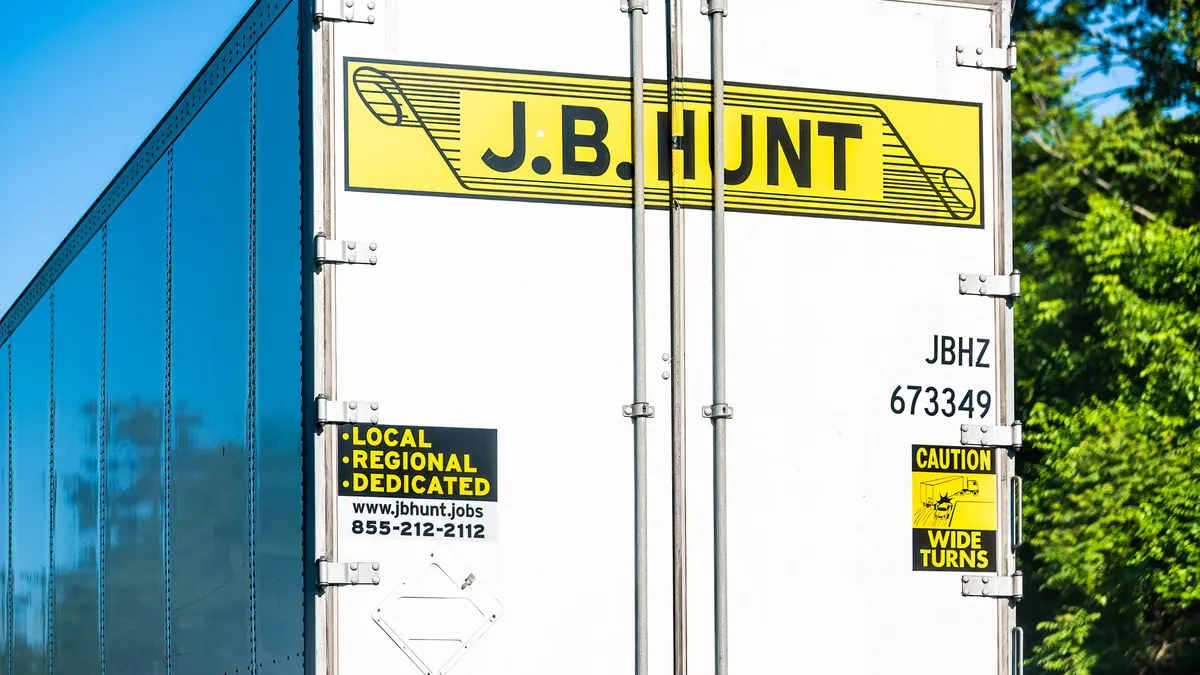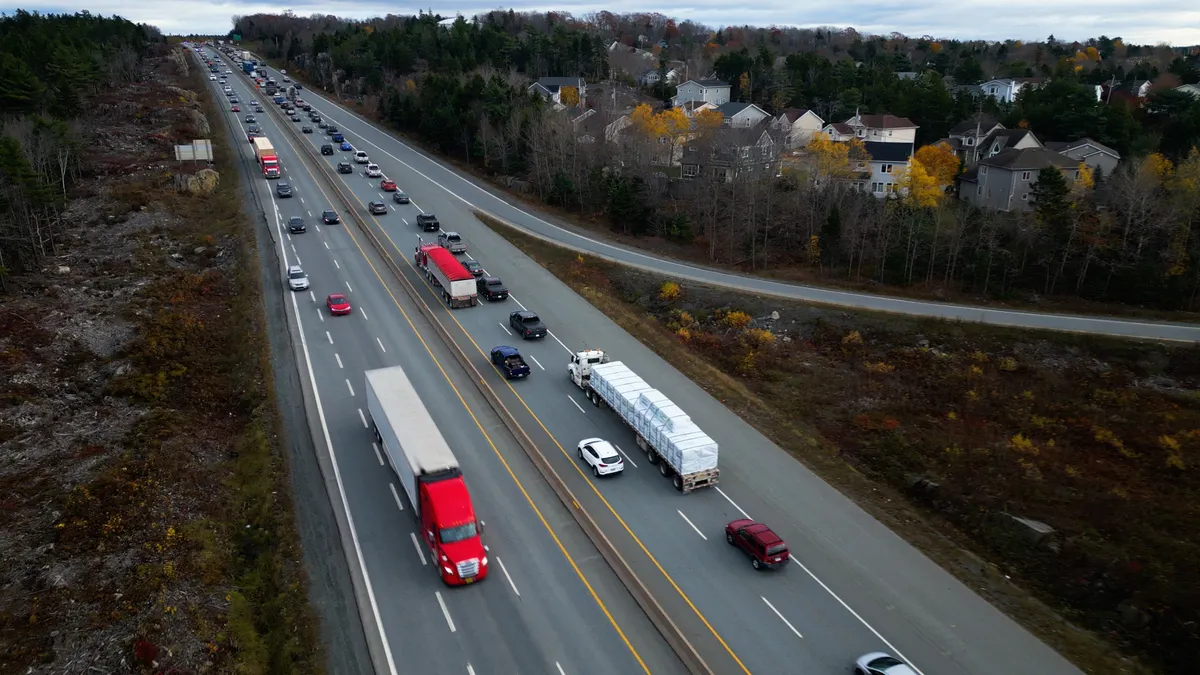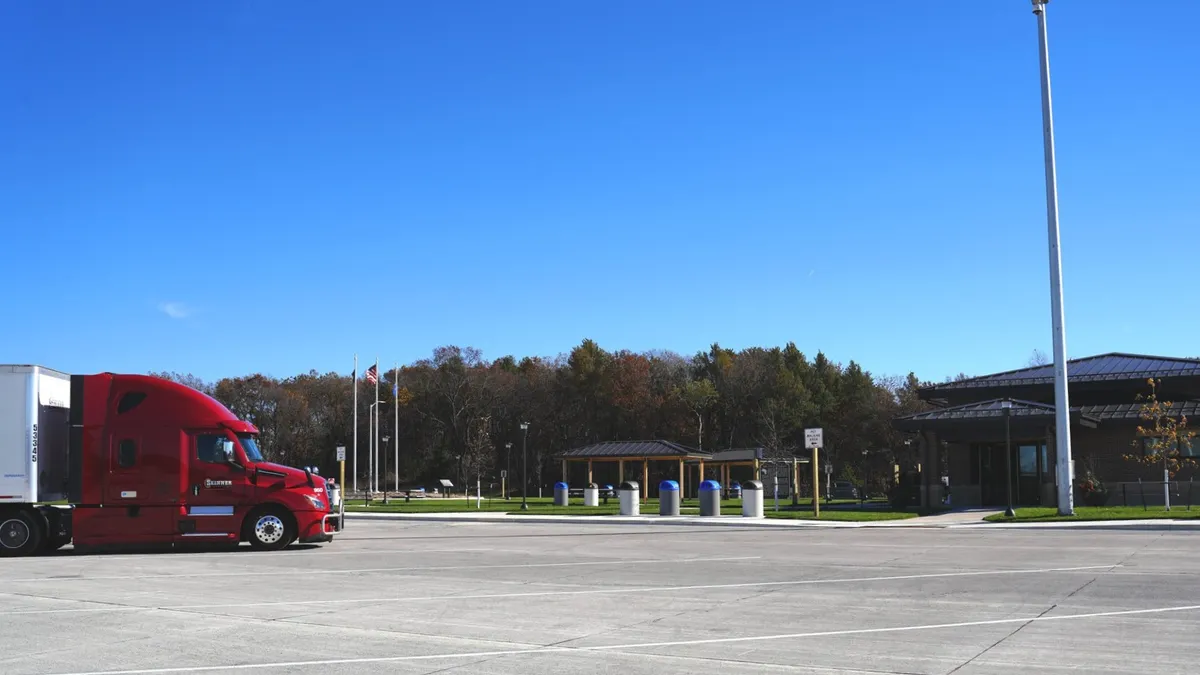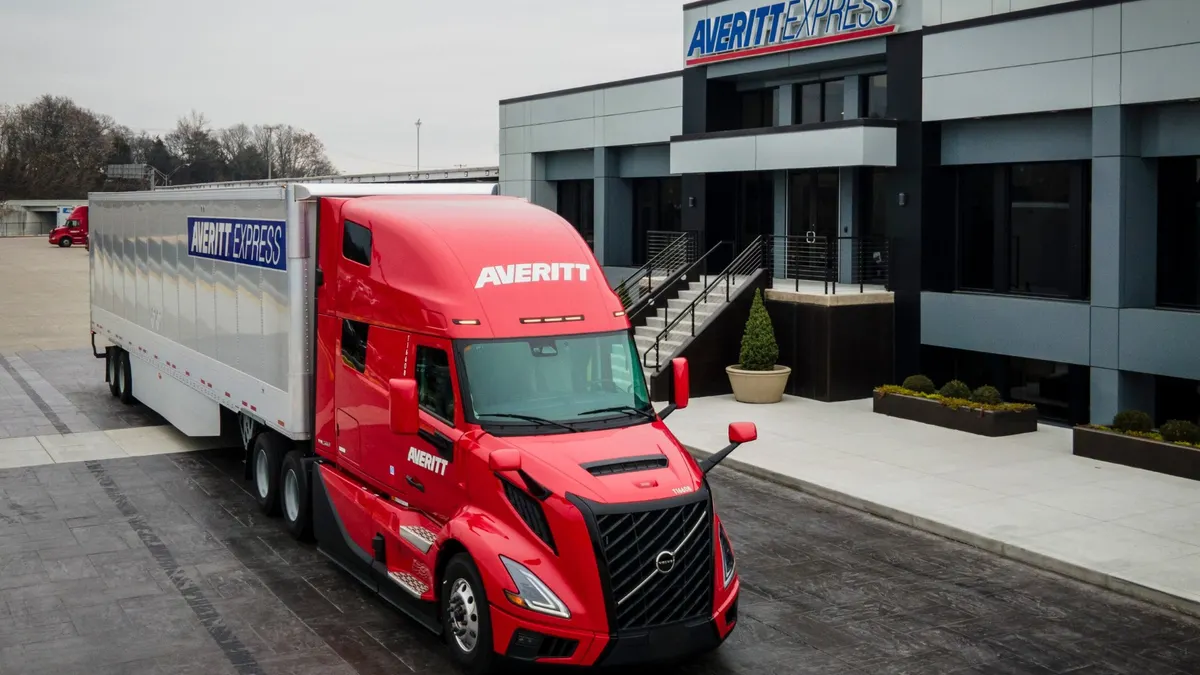The e-commerce boom has created a ripple effect on the trucking market. Warehouses are popping up in new markets, leading drivers and fleets to visit spots they don't normally.
That, in turn, brings up a question: How much is this lane worth? What should be charged in the annual contract to bring a truckload to Peoria, Illinois? Or Baltimore?
The addition of lanes is happening as contract season is heating up, giving shippers and fleets more to haggle over. It's a natural market process playing out right now, according to trucking analysts. But it takes time.
Spot rates for the new lane happen right away. A driver or fleet will take a rate offered or pass on an offer from a load board, regardless of the "newness" of the shipper's location. Over time, those acceptances build a market value, which shippers and carriers can use to assess an annual contract for the lane — a process Dean Croke, principal analyst for DAT, called "new rate development."
"It takes months and months for that lane to be established," Croke said "Once you establish some sort of pattern, a cadence of regularity ... then you can put that into your annual bid."
Striving for network balance
Warehouses are the main symptom of growth in consumer e-commerce behavior. But they are also a sign the supply chain and freight market are trying to work out network imbalances. Carriers look at emerging lanes that have consistent volume and see an opportunity for balance.
"One hundred trucks in, 100 trucks out," said Croke. "They try to balance their inbound-outbound capacity ... As few empty miles as you can possibly do."
Croke is researching the phenomenon and has yet to pinpoint all new warehouses, which he says have a tiny footprint in the data he pores over. But the anecdotes are popping up, as carriers have told him they are running to new destinations.
The new runs are a result of e-commerce changing how the trucking and shippers' markets work, according to Ibrahiim Bayaan, an economist with CBRE Econometric Advisors.
"The way the companies are addressing their supply chains is a little different than it has been in the past," said Bayaan.
"One hundred trucks in, 100 trucks out ... As few empty miles as you can possibly do."

Dean Croke
Principal Analyst for DAT
Commercial real estate is seeing a surge in new and renovated "Class A" warehouses, which are usually bulk warehouses for retailers. They are at least 100,000 square feet, Bayaan said.
And the surge is pushing the warehousing sector to new highs. Employment surpassed its pre-pandemic level to reach the highest level ever recorded with 1.25 million workers in the warehouse and storage sector in September, according to preliminary numbers from the Bureau of Labor Statistics. Likely that's because e-commerce sales jumped almost 32% from Q1 to Q2 to reach nearly $212 billion, according to the U.S. Census Bureau.
Retailers continue to promise quick delivery to consumers, and that means new warehouses are growing in places that are sometimes not big metro areas — places like Athens, Georgia, said Croke, giving an example.
The challenge initially with new lanes is trucks have to run empty miles on the way to the new destination. Those empty miles get factored into the trucker's assessment of whether to take the job.
"Otherwise, he eats it," said Croke of the empty miles.
From inbound to outbound
Sometimes the new lanes come out of big destinations. Trucks typically leave Boston without cargo, once they have dropped off loads in the Massachusetts capital. But Croke has been watching outbound trucks leaving the city with refrigerated cargo for weeks.
As Croke looks over what were once safely considered backhaul lanes out of Boston, he said he is surprised regarding the upward rate changes he is seeing on the spot market, with higher reefer rates out of Boston.
Such oddities appear to be a new trend, one that he said could be the result of e-commerce and a desire of many logistics companies to add warehouses closer to consumer populations.
There are plenty of new lanes forming. Amazon leased 27 million square feet in the first half of 2020, with that space expected to grow to 98 million square feet by the end of the year, according to The Wall Street Journal.
Bayaan said he is not surprised by the growth.
"It's only natural that areas that were not big warehouse areas become bigger warehouse areas," said Bayaan. "It is connected to e-commerce ... In general, big retailers have been growing out their space pretty aggressively."
"The way the companies are addressing their supply chains is a little different than it has been in the past."

Ibrahiim Bayaan
Economist, at CBRE Econometrics Advisors
Shippers are market savvy, so they're considering good access to trucks as they select warehouse locations. The shippers are also betting they can get good contract rates from these new warehouse locations when the dust settles on the rates, ACT Research vice president and senior analyst Tim Denoyer said.
Even as spot rates surge now — composite spot TL rates are 41% higher for the week ending Oct. 25, YoY, Denoyer said — shippers tend to have good relationships with TL carriers, and a good chance to get a fair contractual rate, Denoyer said.
Fleets can expect more new warehouses, whether they are freshly built or buildings that have been renovated. The establishment of new warehouses is one of the strongest parts of commercial real estate today, said Denoyer.
Fleets can rest assured, though, that shippers and warehouse builders will eye locations with good roads so that trucking can create established lanes.
"The ease of getting the product in and out is still very important," said Bayaan.
















